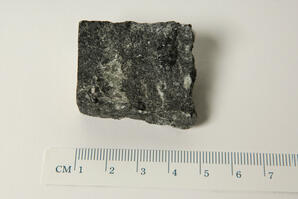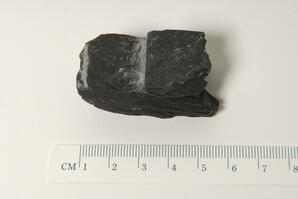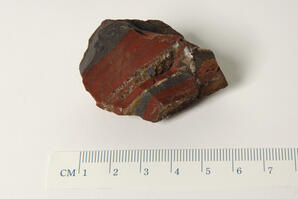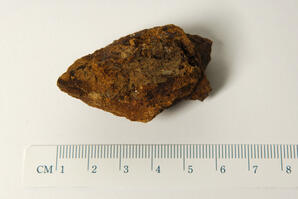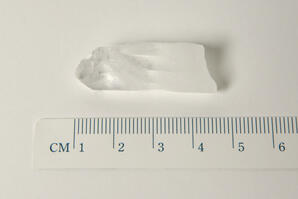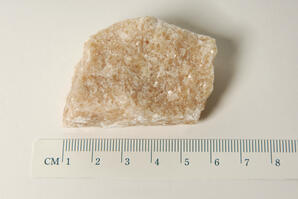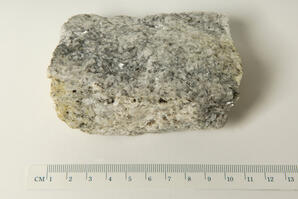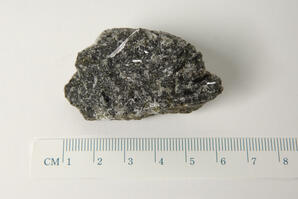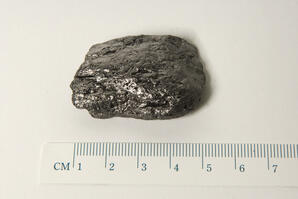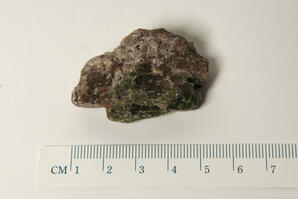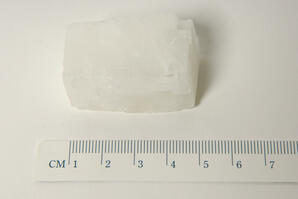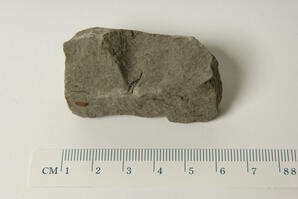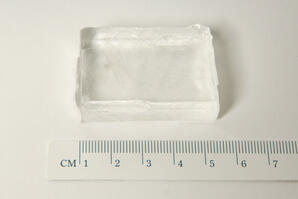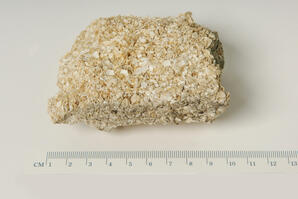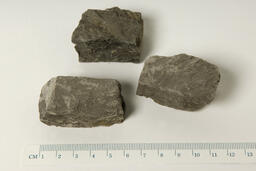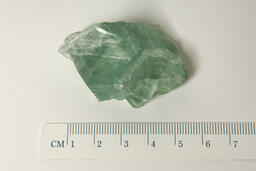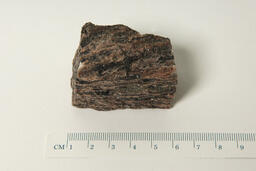Image
Mineralogical Composition: Talc; can be scratched with your fingernail; shades of green, gray, brown, white Texture (grain size, shape, sorting): Fine grained; Nonfoliated Metamorphic grade: High Precursor rock: Basalt, Gabbro, or Ultramafic igneous…
Image
Mineralogical Composition: Dull luster; breaks into hard flat sheets along the slaty cleavage Texture (grain size, shape, sorting): Fine grained; Foliated Metamorphic grade: Low Precursor rock: Mudstone or shale Commercial applications: Roofing…
Image
Common Forms/Occurrences: Mainly of sedimentary origin Useful Identification Test: May be attracted to a magnet after heating Chemical formula: Fe2O3 Crystal System: Thin tabular crystals or massive Colour: Silvery gray, black, or brick red Streak:…
Image
Common Forms/Occurrences: Always of secondary origin resulting from the alteration of other ores or minerals containing iron Useful Identification Test: Hard or soft; Chemical formula: Fe2O3 ? nH2O Crystal System: Amorphous masses Colour: Yellow…
Image
Common Forms/Occurrences: Occurs in large masses in veins and pegmatites Useful Identification Test: Insoluble in acids except HF; soluble in molten Na2CO3 Chemical formula: SiO2 Crystal System: Hexagonal prism and pyramids Colour: Usually…
Image
Mineralogical Composition: Calcite (or dolomite) crystals of nearly equal size and tightly fused together; calcite effervesces in dilute HCl; dolomite effervesces only if powdered Texture (grain size, shape, sorting): Fine to coarse grained;…
Image
Common Forms/Occurrences: Found in sedimentary strata; Formed secondarily from limestone Useful Identification Test: Will not effervesce in cold dilute acids; Powdered dolomite will however effervesce in warm acids Chemical formula: CaMg(CO3)2…
Image
Mineralogical Composition: Mafic; Plagioclase Feldspar, Olivine, Pyroxene, Amphibole Texture (extrusive/intrusive): Intrusive; Phaneritic: coarse-grained Other distinctive properties: Dark gray to black; Essential part of oceanic crust
Image
Common Forms/Occurrences: Principally occurs in metamorphic rocks ie. Crystalline limestones, schists, and gneisses or in hydrothermal veins Useful Identification Test: Opaque, relatively soft, non magnetic, and foliated Chemical formula: C Crystal…
Image
Common Forms/Occurrences: Widely distributed as accessory mineral (all classes of rocks) Useful Identification Test: Soluble in HNO3 or HCl Chemical formula: Ca5F(PO4)3 Crystal System: Hexagonal prisms Colour: Pale green or dark green, brown, blue,…
Image
Common Forms/Occurrences: Found in limestone, chalk, travertine, and onyx Useful Identification Test: Effervesces in dilute HCl Chemical formula: CaCO3 Crystal System: Prisms, rhombohedrons, or scalenohedrons that break into rhombohedrons Colour:…
Image
Texture (grain size, shape, sorting): Breaks into blocks or layers Composition (detrital, biochemical, chemical): Detrital sediment grains; derived from the mechanical and chemical weathering of continental rocks, which are comprised mostly of…
Image
Common Forms/Occurrences: Occurs as extensive beds and irregular masses formed by evaporation of enclosed bodies of sea water Useful Identification Test: Salty taste; Chemical formula: NaCl Crystal System: Forms cubes and octahedrons Colour:…
Image
Texture (grain size, shape, sorting): Mostly sand-sized shell fragments; often contains a few larger whole fossil shells Composition (detrital, biochemical, chemical): Biochemical sediment grains; shells and shell/coral fragments, and/or calcareous…
Image
Common Forms/Occurrences: Widely distributed in mountian belts and deeply eroded shield areas of continental crust Useful Identification Test: Optically negative character and large optical axial angle and extinction angle Chemical formula: calcium…
Image
Texture (grain size, shape, sorting): Fissile (splits easily into layers); no visible grains Composition (detrital, biochemical, chemical): Detrital sediment grains; derived from the mechanical and chemical weathering of continental rocks, which are…
Image
Common Forms/Occurrences: Found in ultramafic igneous rocks and marbles formed from metamorphosed limestone Useful Identification Test: Gelatinizes in HCl Chemical formula: (Fe,Mg)2SiO4 Crystal System: Short crystals that may resemble sand grains…
Image
Common Forms/Occurrences: Present in most igneous and both regional and contact metamorphic rocks Useful Identification Test: Transparent to translucent Chemical formula: K(Mg,Fe)3(Al,Si3O10)(OH,F)2 Crystal System: Very short prisms that split…
Image
Common Forms/Occurrences: Common K-feldspar of pegmatites and hydrothermal veins; Prominent in granites Useful Identification Test: Demonstrates "tartan" twinning Chemical formula: KAlSi3O8 Crystal System: Translucent prisms with…
Image
Common Forms/Occurrences: Common in dolomites and limestones Useful Identification Test: Soluble in H2SO4 with evolution of HF; slightly soluble in HCl Chemical formula: CaF2 Crystal System: Usually cubes Colour: Colourless, purple, blue, gray,…
Image
Mineralogical Composition: Intermediate; Quartz, Potassium Feldspar, Plagioclase Feldspar, Pyroxene, Amphibole, Biotite Texture (extrusive/intrusive): Extrusive; Aphantic: fine-grained Other distinctive properties: Dark gray to black; Found at…
Image
Mineralogical Composition: Visible crystals of two or more minerals in alternating light and dark foliated layers Texture (grain size, shape, sorting): Medium to coarse grained; Folitated Metamorphic grade: Intermediate Precursor rock: Mudstone,…
Image
Common Forms/Occurrences: Found as blocky crystals in basalts, gabbro, and andesites Useful Identification Test: Insoluble in HCl Chemical formula: calcium ferromagnesian silicate Crystal System: Short, 8-sided prisms Colour: Dark green to gray…
Image
Mineralogical Composition: Quartz sand grains fused together; grains will not rub off like sandstone, usually light colored Texture (grain size, shape, sorting): Fine to coarse grained; Nonfoliated Metamorphic grade: High Precursor rock: Sandstone…

